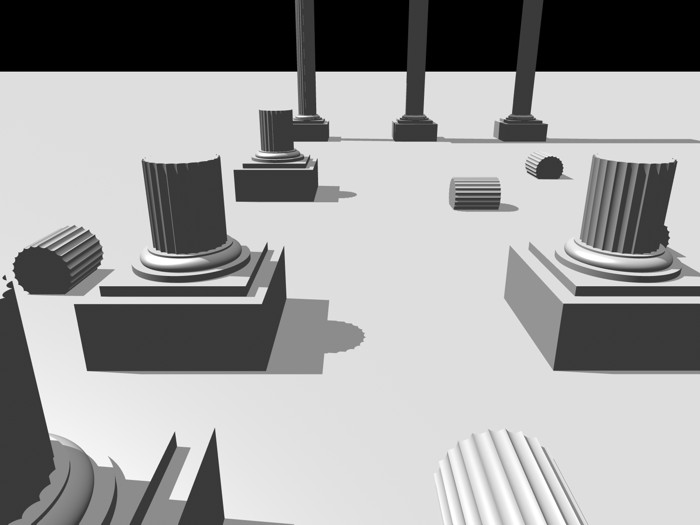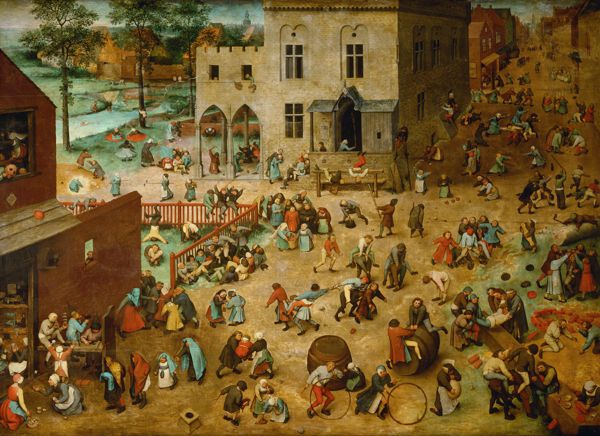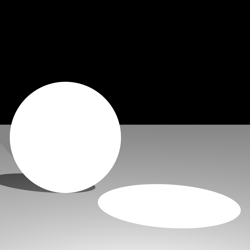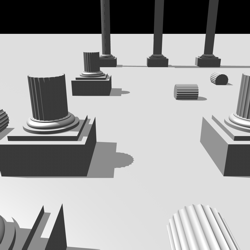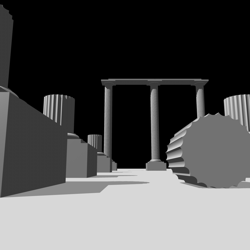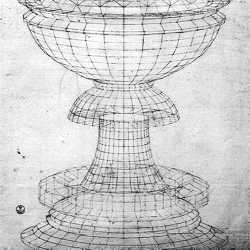Perspective Drawing - Using a High Eye Level
This lesson illustrates how a high eye level focuses more attention on the middle and distant areas of a picture.
(swipe the image back and forward to view)
A high eye level in perspective drawing focuses more attention on the middle and distant areas of a picture. Consequently you have a restricted view of objects that are close as you are essentially looking down upon them.
This is not such a suitable viewpoint for our illustration of ancient ruins, as the foreground objects move outside the picture plane and large areas of the background are empty. The eye is naturally pulled towards the horizon as it forms a strong line across the picture. This also distracts the viewer from the objects in the foreground.
If you swipe over our image to view the rendered version, this imbalance in the composition has been corrected with the use of landscape elements in the background. The hills are used to break up the horizon and link the background with the foreground.
Famous Artworks that use a High Eye Level
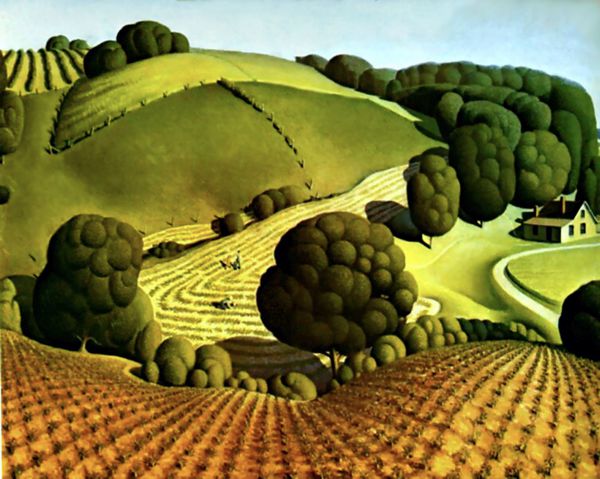
GRANT WOOD (1892-1942)
'Young Corn', 1931 (oil on canvas)
A high eye level is the ideal device for painting panoramic landscapes. The paintings of the American artist, Grant Wood, perfectly demonstrate this compositional style of which 'Young Corn' is typical example. They often use high eye levels to display the gentle patterns, textures and forms of the rolling landscape. His wonderful images have a silent, dream-like clarity and are a product of the artist's imagination and childhood memories. Their idealized and nostalgic views look back with a sense of loss, to an age before industrialization. Today, and as time progresses, that sense of loss continues to increase, and subsequently amplifies the power of his work.
PIETER BRUEGEL (1525-69)
'Children's Games', 1560 (oil on canvas)
(Click on the flip icon to view)
A high eye level is also ideally suited to epic figure compositions of Pieter Bruegel, offering the artist a wide physical space to portray several narrative scenes within the one picture. His painting of 'Children's Games' uses a high eye level to view the scene from above, thereby allowing the artist to arrange the numerous figures into smaller groups which may be viewed separately without much overlapping. The viewer can then clearly identify all the activities in the picture. A high eye level is the ideal compositional device for portraying complex narrative subjects.
At first glance, this painting looks like a catalogue of children's games. However, the longer you look at it, the more you question what you are seeing. Why has Bruegel chosen to set this scene in the 'adult arena' of public buildings like the town hall? Why are there no adults to be seen? Is this a realistic image of children at play or does it suggest another meaning? Is there a clue to the meaning of the work in the range of games being played: some are gentle and caring, some are rough and bullying, some are played alone, some are team games, some are very competitive, some are very imaginative, some require skill and technique and some are completely reckless.

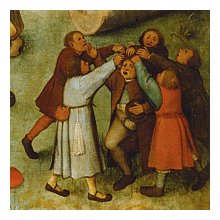
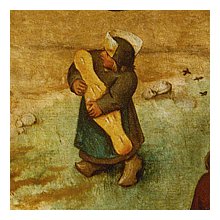
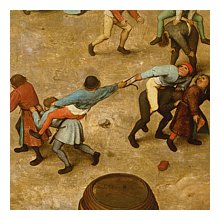
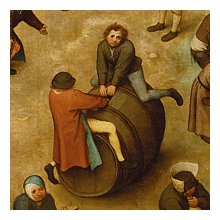
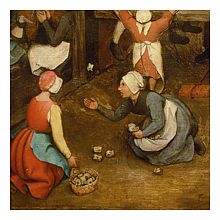


Children have always imitated adult behaviour in their games but today we understand how they reflect their experience of adult life in their play. What would this image have meant to an adult in 1560, in an age when children had few rights and were extended little psychological understanding?
Is this town center, swarming with restless children, an allegorical scene of chaos and social disorder?
Is Bruegel using 'Children's Games' as a metaphor to suggest that there is not much difference between the fantasy and tomfoolery of children's games and the ignorance and irresponsibility of adult society in his day?
Is the painting a warning to adults that they need to take heed of their conduct, if they want their lives to amount to anything more than the frivolous antics of 'Children's Games'?
Bruegel was well known for his moralistic paintings and engravings of 16th century peasant life. These are often set against dramatic backgrounds which portray the changing landscape across the seasons.
However, when you look past his subject matter to examine how Bruegel organizes his pictures, you find a rare visual intelligence that continues to inspire today. Bruegel understands better than any artist in his century, how to compose figures in a landscape.
'Children's Games' is a complex painting with about 250 children involved in over 80 games. The high eye level allows him to assemble the groups of children into lanes formed by the receding lines of perspective (Click on the flip icon to view). This imposes a sense of rhythm and order over a very complex picture and allows the viewer to experience the apparent chaos in a more comfortable way.
Note how Bruegel attaches a symbolic importance to the town hall by placing it in the center of the picture. Its facade exactly divides the top of the painting into three sections. To the right of the building is a stark view of the town where the 'games' stretch endlessly towards the horizon. In contrast a peaceful area of countryside fills the top left of the painting: an essential refuge from the mayhem of the 'games'.


